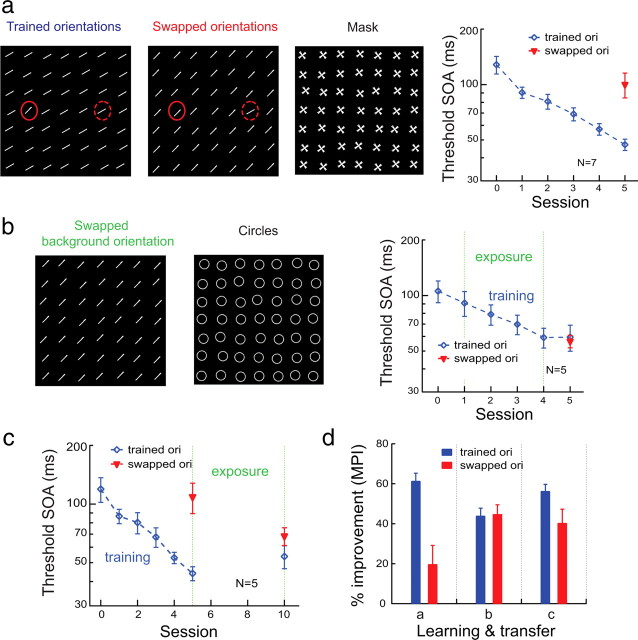Figure 3.
The effect of TPE training on transfer of feature detection learning across orientations. a, Left three panels, Stimuli at trained target-distracter orientations (46° vs 30°), at untrained target-distracter swapped orientations (30° vs 46°), and the mask. The odd element (target) could appear at one of two positions (indicated by red circles that were not present in the actual stimuli). Right, Feature detection was practiced at trained target-distracter orientations (blue diamonds) and the transfer of learning was tested at swapped orientations (red triangles). The mean threshold over the first six staircase runs was taken as the baseline and is indicated by the 0th session. b, Left and middle, Uniform stimulus array containing swapped-background orientation only or containing circles for the bars or circles judgment (the exposure condition). Right, Feature detection was practiced at trained target-distracter orientations (blue diamonds) and the swapped background orientation was repeatedly exposed (bars or circles) in alternating blocks of trials. The transfer of learning was tested at swapped orientations (red triangles). c, The effects of later repeated exposure to the swapped-background orientation after baseline training in five observers from a. d, A summary of learning and transfer. Left, Baseline training in a; middle, simultaneous TPE training in b; right, successive TPE training in c, in which the performance improvement was calculated by comparing the thresholds at the final 10th session and the 0th session.

